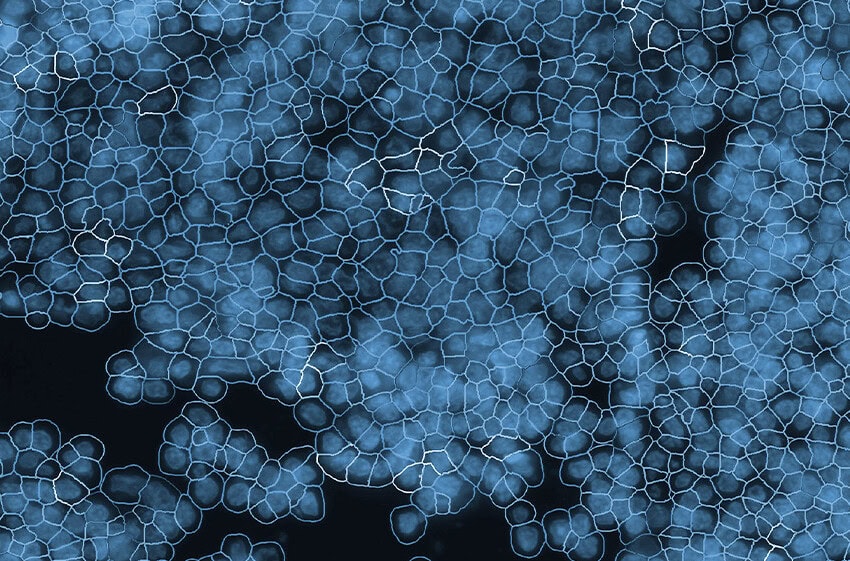
Why is Spatial Genomics Important?
Why is Spatial Genomics Important?
Spatial genomics is important because the human body is a complex three-dimensional structure. That structure is an important part of our molecular physiology. To fully understand genomics requires that we examine it in a spatially resolved manner.
If we consider the human body, it represents the integration of several different complex systems, each working together in harmony to promote optimal physiology. The human body exists in three-dimensional space. Proper functioning of the body relies on correct spatial rearrangements on both a gross and molecular scale.
For example, specific structures and organs are found in their locations to maintain optimum physiological functioning. This is reflected at the molecular scale. One of the key principles of molecular biology is that structure dictates function. To more fully understand our physiology, it is important to attend to form and context when trying to understand physiology.
Gene Expression and Transcriptional Dynamics within Spatial Genomics
Gene expression and transcriptional dynamics are another important part of our biology. Appropriate gene expression is necessary for maintaining our physiology and biological functioning. For example, the endocrine system is able to respond to cues from the nervous system via the hypothalamus and cause changes in gene expression that ultimately lead to the regulation of many physiological processes, from blood pressure to metabolism. Therefore, when we consider the importance of spatial genomics, it represents the combination of two critically important processes to maintain the health and function of our bodies: form and gene expression.
Spatial genomics facilitates the examination of gene expression in a spatial context. As an analogy, consider the concept of ‘table’ – without context, we do not know if the table is used as a surface for eating, surgery, typing on a computer, working on a jigsaw puzzle, or serving beverages. Looking at gene expression within its spatial context provides this important layer of understanding of what is going on inside the cell, just like knowing where a table is and what is sitting on it gives us the context needed to understand function. Therefore, the examination of genes in a spatial context provides a critically important context for the interpretation of transcriptional dynamics and enhances our understanding of the molecular biology of the cell.
What is Spatial Genomics & Transcriptomics?
Spatial genomics includes genomic (total DNA and RNA), transcriptomic (RNA transcripts) and epigenomic (molecular compounds) profiling methods carried out in intact tissue with positional context. Spatial genomics enables molecularly connecting a particular genotype to its phenotype.
Spatial Genomics
The genomic DNA in a eukaryotic cell is highly folded and organized into chromatin structures situated inside the cell nucleus. Although all cells in an organism harbor an identical genome, there exists a tremendous amount of cellular diversity with different functions and morphology. Spatial genomics is essential to understanding the relationship between differential gene expression, genome organization, and the effect of epigenomes while maintaining the positional context.
Cancer research has benefited tremendously from the application of spatial genomics. As an example, many cancers are associated with genetic variation located in non-coding regions, and spatial genomics can provide insights into the consequences of non-coding genome alteration and epigenetic effects that could impact chromatin organization and contribute toward carcinogenesis.
Spatial Transcriptomics
Spatial transcriptomics methods can help localize and measure genome-wide readouts in the form of mRNA transcripts at high resolution within intact tissue while maintaining positional information of the transcript. Spatial transcriptomics enables researchers to look at the transcriptome fingerprint or net gene expression of each cell during development and within diseased tissues.
The Human Cell Atlas project, an international collaborative effort, relies on spatial transcriptomics to characterize all human cell types based on distinctive gene expression profiles and connect them to their cellular location and morphology. This project has been beneficial in unraveling new and rare cell types, gene expression heterogeneity in a cell population, and patterns of cell fate choices.
Traditionally, spatial gene transcripts were captured using in situ hybridization or immunohistochemistry techniques. While these techniques did provide spatially resolved data, quantification was often difficult, and the analysis was limited to only a handful of genes in a single experiment.
Spatial Transcriptomics Technologies
Today, there are several advanced high-resolution spatial transcriptomics technologies available that broadly fall into two categories- 1) image-based in situ hybridization (ISH) and in situ sequencing (ISS), 2) and in situ capturing techniques. These methods vary in the number of transcripts detected, resolution, and size of the region analyzed.
Image-based approaches, such as single-cell imaging, are suitable for analyzing known genes and tend to have a higher resolution rendering them ideal for studying single-cell organization. Sequencing technologies, on the other hand, capture the whole transcriptome from tissue sections in an unbiased manner but have a limited spatial resolution. Many of these methods use molecularly barcoded mRNA transcripts enabling the spatial localization and quantification of these transcripts.
What Techniques are Used in Spatial Genomics & Transcriptomics?
Spatial genomics and spatial transcriptomics are naming variations for a technique whereby users can garner gene expression information in a spatial context. Using this technique, scientists can use next-generation sequencing to identify transcriptomics within a specific tissue or cellular context.
Spatial genomics was first coined in 2009 by Michael Doyle and colleagues. The technology was later refined in 2016 by Patrik Stahl and colleagues. In 2020, spatially resolved transcriptomics was chosen by Nature Methods as the method of the year.
Fusion of Multiple Technologies
Spatial genomics/transcriptomics fuses common approaches in molecular biology, including immune fluorescence techniques, gene expression, and next-generation sequencing. In general, this technique involves the fluorescent labeling of proteins or RNA. Once a target region of the cell is identified, the user utilizes ultraviolet light to cleave off molecular tags on the antibodies or probes. These tags are then processed through nCounter or next-generation sequencing.

Users can then assess transcriptional dynamics within a very specific context. The user can understand the behavior of individual cells, the social context of cells within tissues, and the transcriptional dynamics during cellular and molecular processes of interest. In addition to assessing cell dynamics in context, this technique can also be used at the subcellular level. For example, users can look at the location of specific mRNA transcripts within a cell.
Spatial Genomics/Transcriptomics Provides Balance
Spatial genomics/transcriptomics provides an analytic sweet spot for scientists. With bulk sequencing, important yet unique or rare signals can be lost within the batch. Single-cell sequencing alleviates some of these concerns because researchers can focus on individual cells. However, these individual cells are taken out of their subcellular context. Since cells do not work in isolation and are highly social, like bulk sequencing, single-cell sequencing provides a limited view of the molecular biology of the process.
Spatial genomics/transcriptomics, however, provides single-cell resolution but within a cellular context. Therefore, the technique allows investigators to see detail in context. As an analogy, bulk sequencing is like a blurry image from the air of a landscape. Single-cell sequencing is like a high-resolution image of one small part of a landscape. Spatial genomics/transcriptomics is like a high-resolution image of a landscape. Both the details and context are preserved.
For Research Use Only. Not for use in diagnostic procedures.



